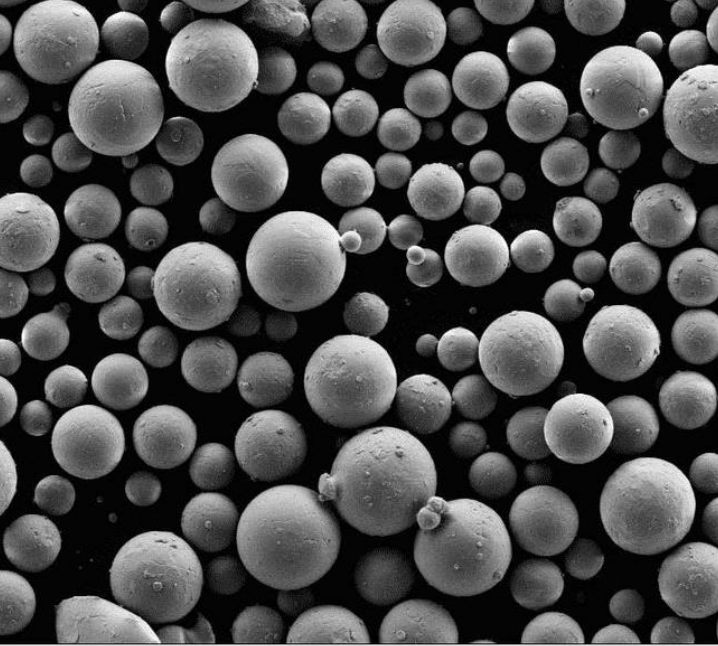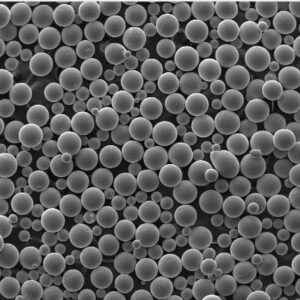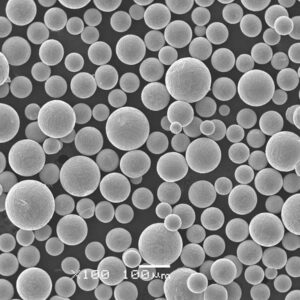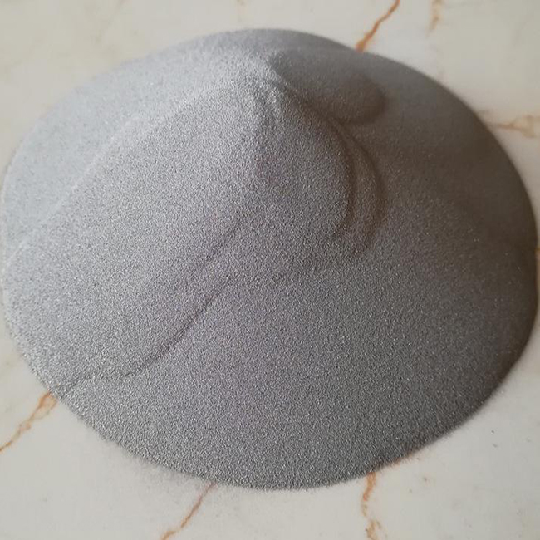Tungsten powder is a pure, finely divided form of tungsten metal used across various industries. This comprehensive guide provides an overview of tungsten powder types, compositions, properties, applications, specifications, pricing, comparisons, and suppliers.
Overview of Tungsten Powder
Tungsten powder is produced by reducing tungsten oxide under hydrogen atmosphere. The resulting pure tungsten powder exhibits unique properties like:
- Extremely high density
- High temperature strength
- Wear and corrosion resistance
- Thermal and electrical conductivity
- Low coefficient of expansion
Key attributes of tungsten powder include:
- Purity levels from 99% to 99.999% W
- Controlled particle size and morphology
- Spherical, flattened or angular powder shapes
- Tap densities from 9 to 12 g/cc
- Passivated surface for handling in air
With its distinctive properties, tungsten powder is ideally suited for manufacturing components for demanding applications via powder metallurgy as well as coating deposition processes.
Types of Tungsten Powder
Various standard grades and specialized types of tungsten powder are commercially available:
Types of Tungsten Powder
| Type | Description |
|---|---|
| Pure | 99.9% to 99.999% W, low contaminants |
| Alloyed | Small additions of Cu, Ni, Fe |
| Nano powder | Particle size under 100 nm |
| Spherical | Smooth rounded particle shape |
| Angular | Jagged, irregular particle shape |
| Thermally spray grade | Formed into agglomerates |
| Chemical grade | For tungsten compounds, catalysts |
Pure tungsten is most common. Alloying elements, particle size, shape, and coatings can be varied based on application needs.

Composition of Tungsten Powder
Tungsten powder composition by weight percentage:
- Tungsten (W) – balance
- Typical impurities:
- Oxygen (O) – 0.06% – 0.50%
- Carbon (C) – 0.02% – 0.30%
- Nitrogen (N) – 0.02% – 0.10%
- Hydrogen (H) – 0.01% – 0.10%
- Alloying elements in small amounts:
- Copper (Cu) – 1% max
- Nickel (Ni) – 1% max
- Iron (Fe) – 1% max
- Potassium (K) – 0.03% max
High purity tungsten grades minimize impurities for superior performance. Specific compositions are customized as per application needs.
Properties of Tungsten Powder
Key properties of various tungsten powder grades:
Properties of Tungsten Powder
| Property | Value | Significance |
|---|---|---|
| Density | 18-19 g/cc | Imparts weight, strength |
| Melting point | 3400°C | Retains strength at high temperatures |
| Electrical resistivity | 5.5 x 10^-6 Ωm | Heating element, electronics |
| Thermal conductivity | 170 W/mK | Heat dissipation |
| Coefficient of thermal expansion | 4.5 x 10^-6 /°C | Thermal shock resistance |
| Young’s modulus | 400 GPa | Stiffness, resistance to deformation |
| Vickers hardness | 400 HV | Wear resistance |
The unique properties of tungsten make it suitable for high temperature, wear-resistant, and high-density applications across industries.
Characteristics of Tungsten Powder
Key characteristics of tungsten powder:
Tungsten Powder Characteristics
| Characteristic | Typical Values | Significance |
|---|---|---|
| Particle shape | Varied | Affects density, flowability |
| Particle size | 0.5 – 150 μm | Smaller sizes improve sintering |
| Apparent density | 2 – 3 g/cc | Indicates compaction and shrinkage |
| Tap density | 9 – 12 g/cc | High packing density |
| Specific surface area | 0.05 – 0.5 m2/g | Impacts reactivity, sintering |
| Oxygen content | 500 – 1500 ppm | Causes embrittlement if high |
| Flow rate | 20 – 30 s/50g | Measure of powder flowability |
Morphology, size distribution, density, surface area and flow rate are controlled during manufacturing as per end application requirements.
Specifications of Tungsten Powder
Tungsten powder products are specified by:
Tungsten Powder Specifications
| Parameter | Typical Values |
|---|---|
| Purity | 99.9% to 99.999% W |
| Particle size | 1 to 150 μm |
| Apparent density | 2 to 4 g/cc |
| Tap density | 9 to 12 g/cc |
| Specific surface area | 0.05 to 0.5 m2/g |
| Oxygen content | < 2000 ppm |
| Carbon content | < 1000 ppm |
| Hydrogen content | < 200 ppm |
| Nitrogen content | < 100 ppm |
| Alloying elements | < 1% |
Meeting composition limits, particle size distribution, surface area, density, and impurity specifications ensures suitability for intended applications.
-
 Ti48Al2Cr2Nb powder
Ti48Al2Cr2Nb powder -
 Ti45Al8Nb Powder
Ti45Al8Nb Powder -
 Ti22Al25Nb Powder
Ti22Al25Nb Powder -
 TC18 Powder : Unlocking the Power of Titanium Carbide
TC18 Powder : Unlocking the Power of Titanium Carbide -
 TC11 Powder : A Comprehensive Guide
TC11 Powder : A Comprehensive Guide -
 TC4 ELI Powder: Unlocking the Potential of Titanium Alloys
TC4 ELI Powder: Unlocking the Potential of Titanium Alloys -
 Best Ti-6Al-4V powder (TC4 Powder)for additive manufacturing
Best Ti-6Al-4V powder (TC4 Powder)for additive manufacturing -
 TA15 Titanium Alloy Powder
TA15 Titanium Alloy Powder -
 Titanium and aluminum TA7 powder
Titanium and aluminum TA7 powder
Size Distribution of Tungsten Powder
Various tungsten powder size fractions are available:
Tungsten Powder Size Distribution
| Particle Size | Description | Applications |
|---|---|---|
| 1 – 10 μm | Superfine powder | Additive manufacturing, electronics |
| 10 – 25 μm | Fine powder | Compacts, thermal spray |
| 25 – 45 μm | Medium powder | Tooling, cutting tools |
| 45 – 150 μm | Coarse powder | Heavy alloys, radiation shielding |
Finer tungsten powder sizes improve sintered density and properties but are harder to handle. Coarser sizes offer better flow and packing for press and sinter applications.
Grades of Tungsten Powder
Tungsten powder grades classified by purity levels:
Grades of Tungsten Powder
| Grade | Purity (%W) | Total Impurities (ppm) |
|---|---|---|
| CP | 99.9 | 10000 |
| RMP | 99.95 | 5000 |
| SP | 99.98 | 2000 |
| UHP | 99.99 | 1000 |
| UP | 99.999 | 100 |
CP = crude powder, RMP = reactor melt powder, SP = sodium-reduced powder, UHP = ultra high purity, UP = ultra purity
Higher purity reduces contaminants for improved performance. Custom alloy grades are also produced.
Global Standards for Tungsten Powder
Key international specifications for tungsten powder:
- ASTM B763 – Standard for pure tungsten powder
- ISO 18274 – Chemical analysis of tungsten powders
- ASTM B939 – Standard guide for tungsten powder characterization
- ISO 13779 – Determination of tap density and apparent density
- JIS H 5302 – Japanese standard for tungsten powder
- GB/T 11024 – Chinese national standard for tungsten powder
Compliance with global standards ensures quality and performance for industrial use.
Applications of Tungsten Powder
Major applications of tungsten powder across industries:
Tungsten Powder Applications
| Industry | Application |
|---|---|
| Aerospace | Turbine blades, rocket nozzles |
| Automotive | Filaments in lamps, gyro weights |
| Electronics | Contacts and heat sinks |
| Petrochemical | Catalysts for refining |
| Manufacturing | Cutting tools, dies, tooling |
| Defense | Kinetic energy penetrators, radiation shielding |
| Sporting | Shotgun pellets, darts, fishing weights |
Tungsten’s high temperature strength and density suit it for nose cones, heat sinks, tooling, and weights. It also has chemical and electronic uses.
Suppliers of Tungsten Powder
Key global suppliers of pure tungsten powder:
Tungsten Powder Manufacturers
| Company | Location |
|---|---|
| HC Starck | Germany, USA |
| Buffalo Tungsten | USA |
| Midwest Tungsten | USA |
| Wolfram Company | Austria |
| TaeguTec | South Korea |
| Japanese New Metals | Japan |
| GTP | China |
These companies offer various tungsten powder grades meeting international quality standards. Both standard and customer-specified products are available.
Pricing of Tungsten Powder
Tungsten powder price depends on factors like:
- Purity grade
- Particle size and distribution
- Powder shape and morphology
- Surface area and density
- Purchase quantity
- Production process used
- Supply and demand market dynamics
Tungsten Powder Price
| Grade | Price per kg |
|---|---|
| CP (99.9% W) | $50 – $100 |
| RMP (99.95% W) | $100 – $150 |
| SP (99.98% W) | $150 – $250 |
| UHP (99.99% W) | $200 – $400 |
| UP (99.999% W) | $500 – $1000 |
Economics of scale apply – prices are lower for bulk orders of 100+ kg. Ultrafine nano powders can cost significantly higher.

Pros and Cons of Tungsten Powder
Advantages of Tungsten Powder
- Extreme hardness and strength
- Density allows compact weight reduction
- Retains properties at very high temperatures
- Excellent thermal conductivity
- Low coefficient of thermal expansion
- Biocompatible – suitable for medical implants
- Environmental stability and corrosion resistance
Disadvantages of Tungsten Powder
- Expensive compared to other metal powders
- Limited global supply and availability
- Difficult to machine due to hardness
- Brittle with low fracture toughness
- High processing temperatures required
- Prone to oxidation at elevated temperatures
- Specific hazards associated with fine powders
Tungsten’s unmatched thermal, mechanical, and ballistic properties justify its use where performance outweighs cost. Proper precautions must be taken when handling fine tungsten powders.
Comparison With Other Metal Powders
Comparison of Tungsten Powder With Alternatives
| Parameter | Tungsten | Molybdenum | Tantalum |
|---|---|---|---|
| Density | 19 g/cc | 10 g/cc | 16 g/cc |
| Melting point | 3410°C | 2610°C | 2996°C |
| Electrical resistivity | 5.5 μΩ-cm | 5.5 μΩ-cm | 13 μΩ-cm |
| Thermal conductivity | 165 W/m-K | 140 W/m-K | 57 W/m-K |
| Coefficient of thermal expansion | 4.5 ×10−6/K | 5.0 ×10−6/K | 6.5 ×10−6/K |
| Price per kg | $50-$1000 | $30-$100 | $250-$500 |
Molybdenum and tantalum have some overlapping properties but lower density and cost. Tungsten outperforms on key thermal and mechanical characteristics.
Frequently Asked Questions
Q: How is tungsten powder produced?
A: Tungsten powder is primarily made by hydrogen reduction of tungsten oxides at high temperature followed by crushing and milling to achieve the desired particle size distribution.
Q: What are the different grades of tungsten powder?
A: Common tungsten powder grades categorized by increasing purity levels are CP, RMP, SP, UHP, and UP. Purity levels range from 99.9% to 99.999% tungsten.
Q: What particle sizes of tungsten powder are available?
A: Tungsten powder particle sizes range from 1 micron to 150 microns. Finer powders improve sintering while coarser sizes have better flowability.
Q: What industries use tungsten powder the most?
A: Key industries using tungsten powder include aerospace, military, automotive, electronics, manufacturing, and the chemical industry.
Q: What alloys can tungsten powder be combined with?
A: Tungsten is alloyed with iron, nickel, copper or cobalt to improve toughness. Small amounts of carbide forming elements like titanium or tantalum are also added.
Q: What precautions should be taken when handling tungsten powder?
A: Fine tungsten powder can combust and must be handled in an inert atmosphere. Pressurized hydrogen usage during production necessitates safety measures.
Q: How is tungsten powder processed into end products?
A: Main methods are powder metallurgy, metal injection molding, additive manufacturing, thermal spraying, powder rolling, and hot isostatic pressing.
Q: What are emerging trends for tungsten powder?
A: Additive manufacturing and nanostructured tungsten powders for cutting tools, electronics, and alloys with improved ductility and toughness.
Q: Are tungsten powder products recyclable?
A: Yes, tungsten scrap and unused powder can be recycled by hydrogen reduction. Some processing is required to remove coatings or impurities.





